Introduction:
Product Filter is essential for any WooCommerce store with multiple products. It improves navigation, enhances user experience, and ultimately boosts conversions.
Since Divi does not come with a native product filter module for WooCommerce, but with WooExpand’s Product Filter Module, you can add advanced filtering options—designed specifically for Divi—without any coding.
Why Use a Product Filter in your Divi Store?
Filtering is more than a convenience—it’s a necessity for any store with multiple categories, variations, or attributes.
Benefits of adding product filters:
- Faster product discovery → better user experience
- Reduced bounce rates
- Higher conversion rates due to easier navigation
- Essential for large inventories
WooExpand’s Product Filter module
Unlike generic plugins, WooExpand’s Product Filter:
- Built for Divi → No shortcode hassle, fully visual editing
- Lightweight & Fast → Optimized for speed
- Modular → Only load what you need
- Full Styling Control → Customize every element in the Divi Builder
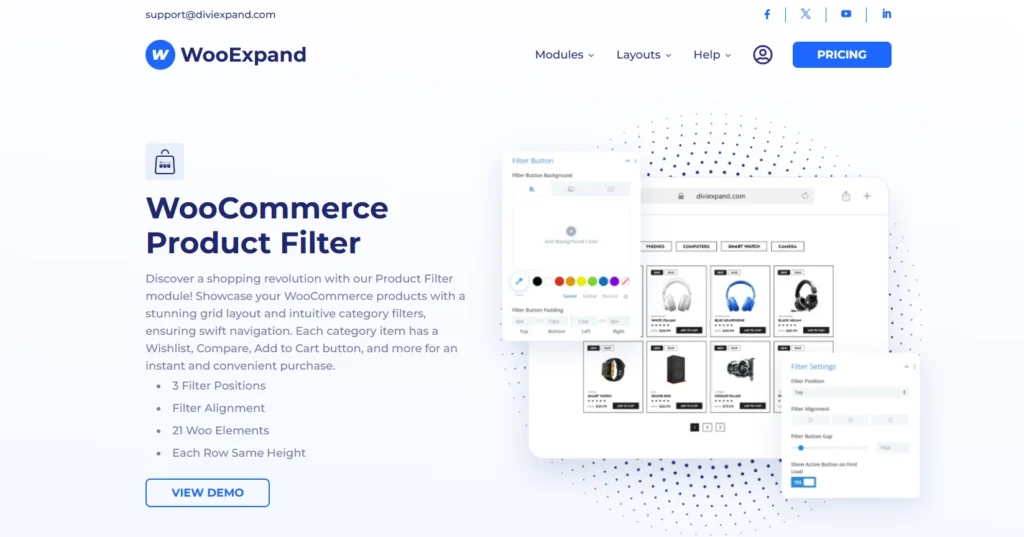
How to Use the Product Filter Module
Step 1 – Install & Activate WooExpand
- Get WooExpand from the pricing page
- Simply upload the plugin in your WordPress dashboard and activate it.
- Enter your Licence Key & enable modules.
Step 2 – Enabled the Product Filter Module
- Go to the dashboard of your WordPress
- Check if the Product Filter Module is enabled or not from the WooExpand settings.
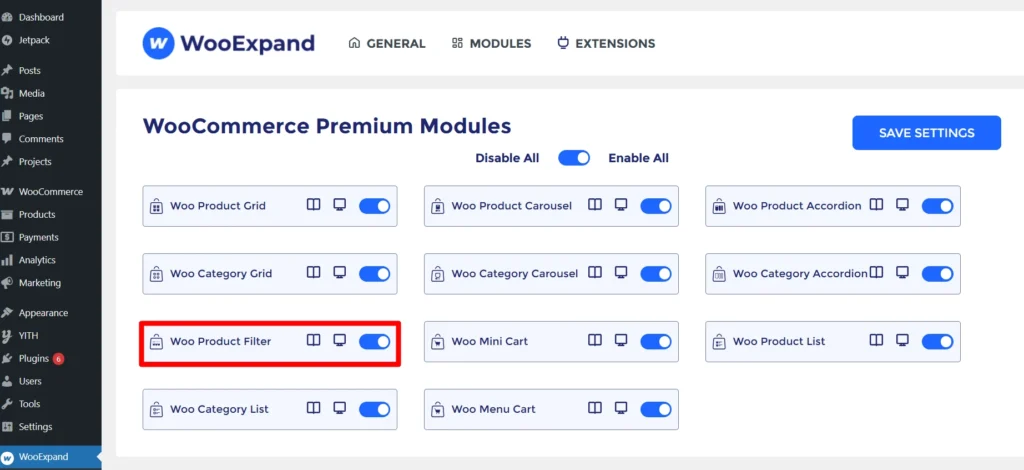
Step 3: Open the Divi Builder
- Create or edit a page
- Add a WooExpand Product Filter Module
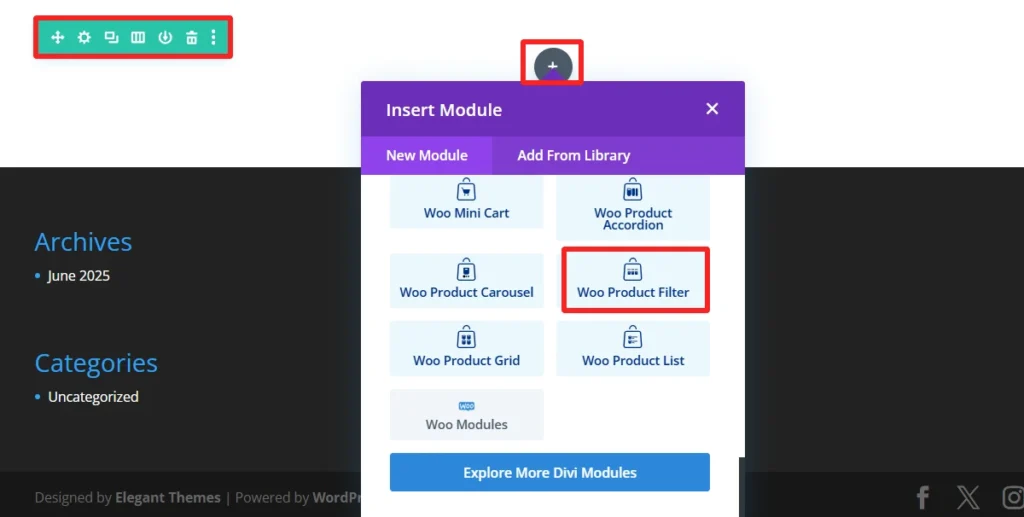
Step 4: Configure Your Filter
1. Select Product Source: WooExpand has a total of 22 child elements for the product filter module. You can select any of your preferred child elements from here.
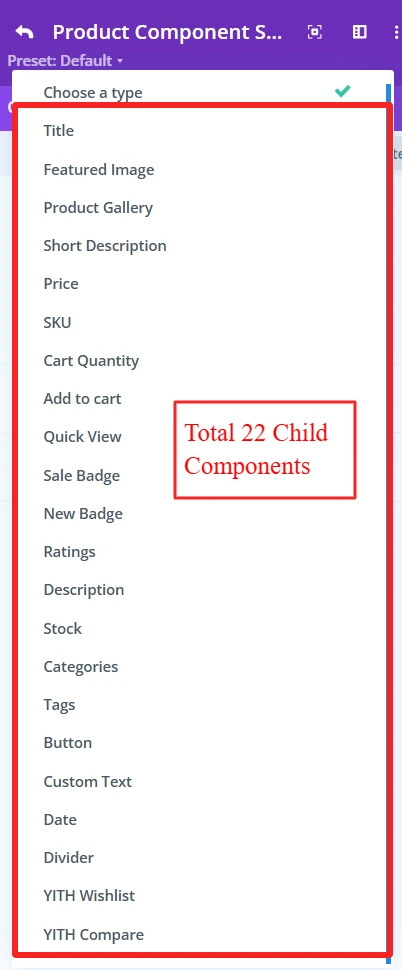
2. You can add child elements using the + icon. As here, these five child elements are added to create a demo design.
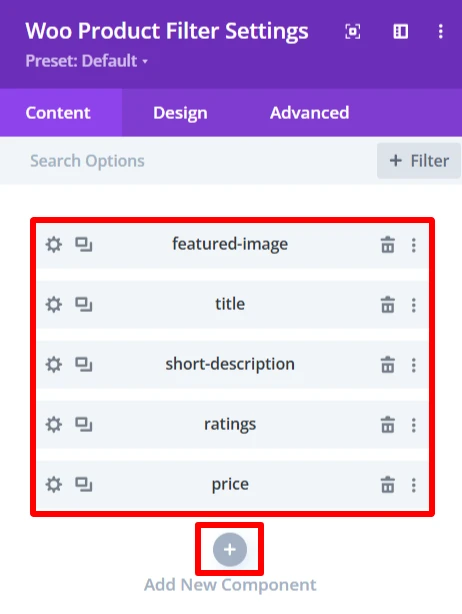
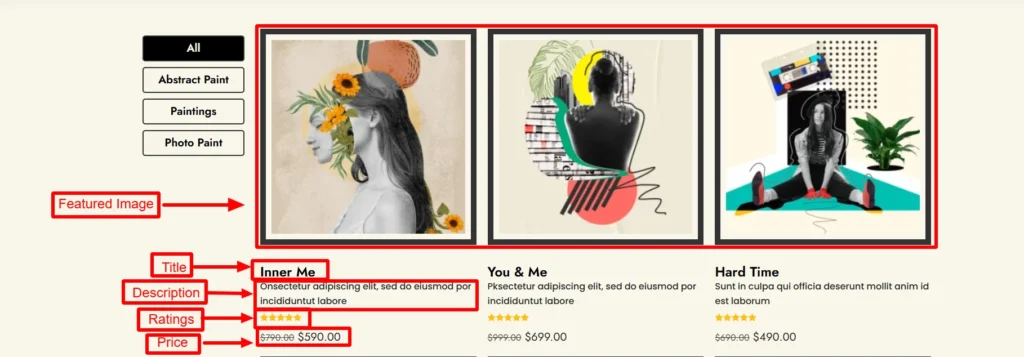
3. From the Content Settings, you can set the product view type, use custom categories, include categories as your preference.
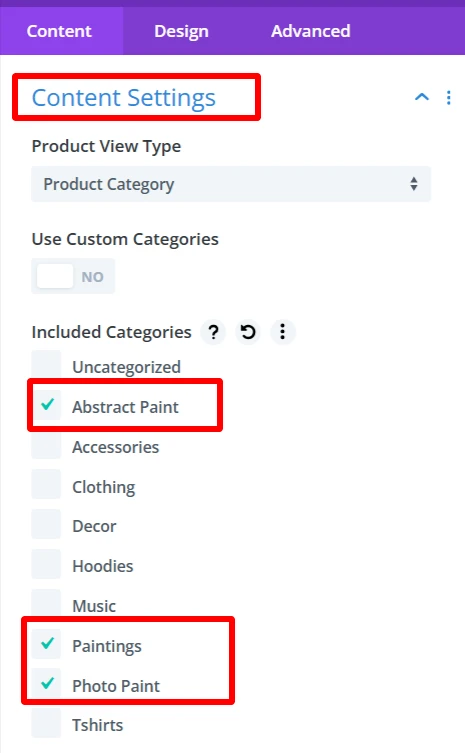
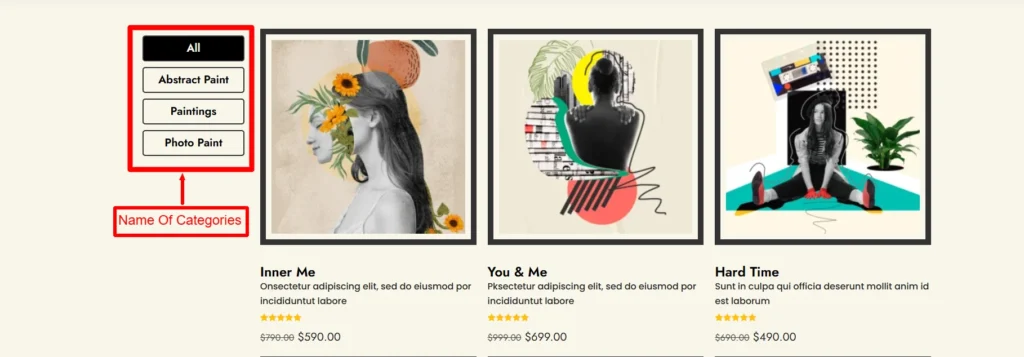
4. Filter Settings In the WooCommerce Product Filter module, manage the way how the product filter works and set the configuration for it.
- Filter Position: Defines the filter’s placement. Like Top, Bottom, left, or right to place the filter.
- Filter Placement: set how to align the filter (top, center, buttom).
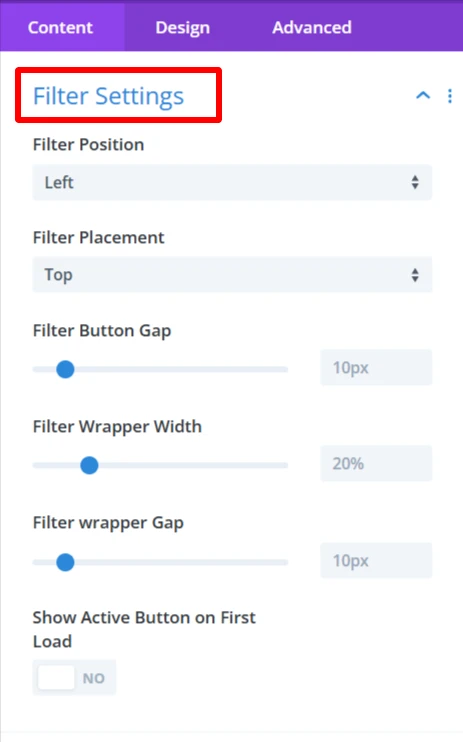
Demo design for Filter position left and placement Top.

Step 5: Experience Design with Divi-Controls
- Easily change spacing, typography, colors, etc, from the design panel.
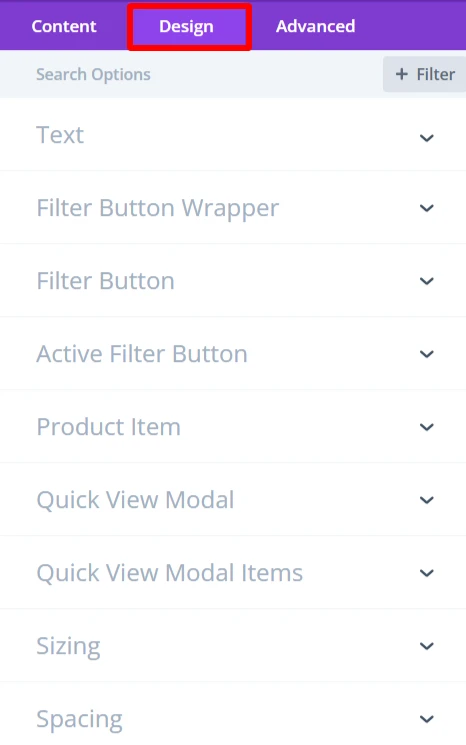
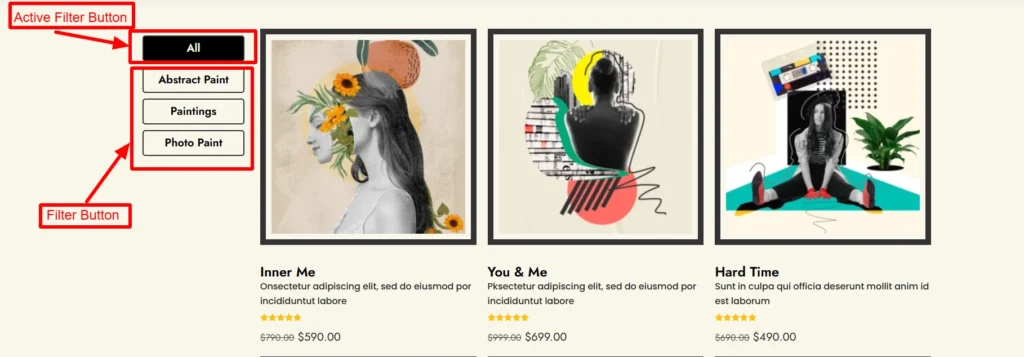
As you can see, the background color of the Active Filter Button & Filter Button was changed using the design tab.
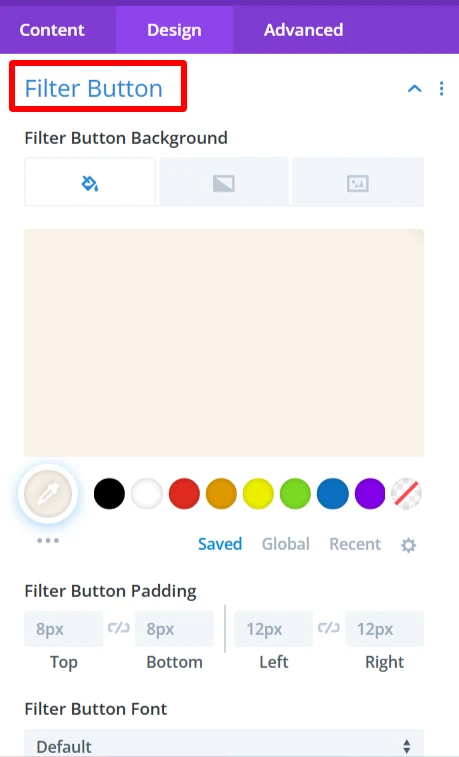
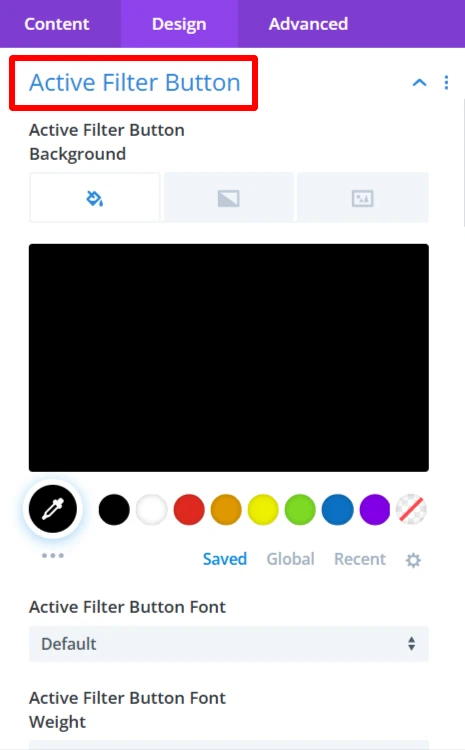
- For more information about these features, you can visit WooExpand’s documentation about Product Filter.
Step 6: Preview and Publish
- Preview the Filter desktop View and mobile View
- When you are satisfied with the design, publish your page and go live
Demo & Styling Inspiration
Do you want to see what it looks like before you try?
👉 View the Live Demo Here — Discover filter variations.
👉 Learn How to Import Demo
Conclusion
Adding a Product Filter can drastically improve navigation and sales for your WooCommerce store. And with WooExpand, you can do it without code—all inside Divi’s Visual Builder.
- See Live Demo
- Get WooExpand Now — Lifetime License Available!
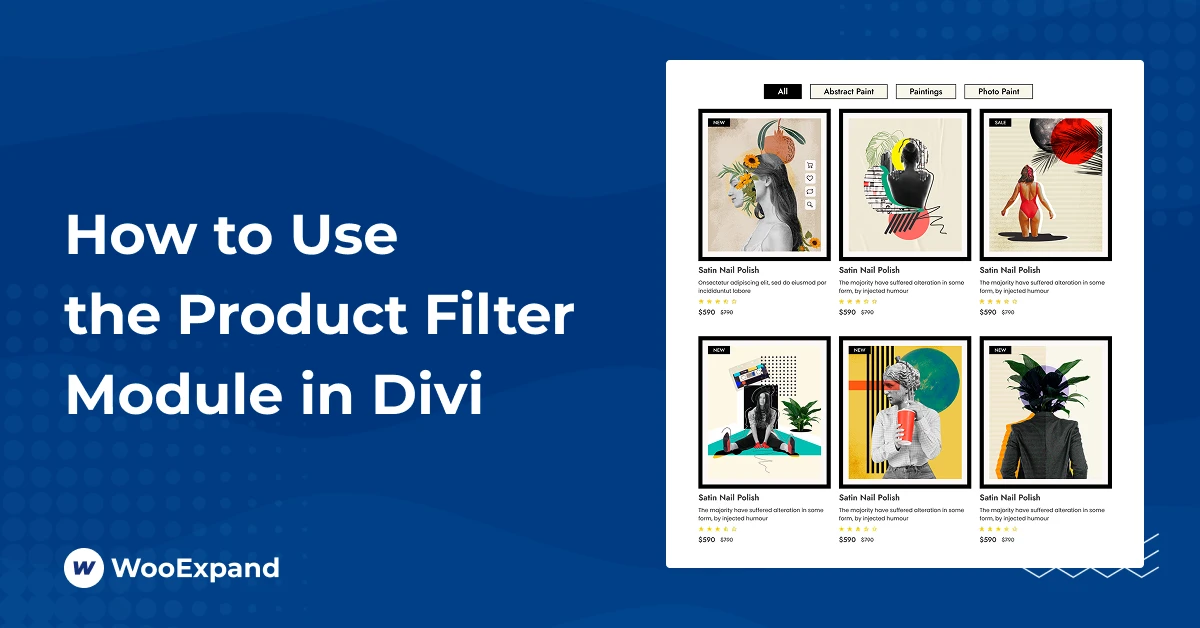
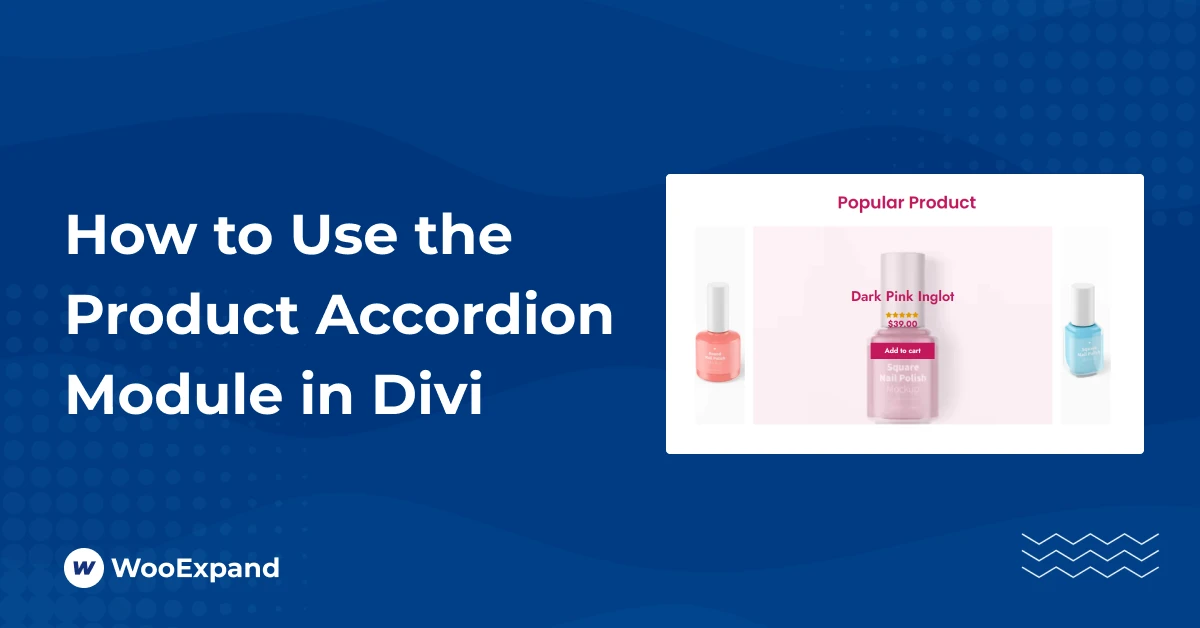
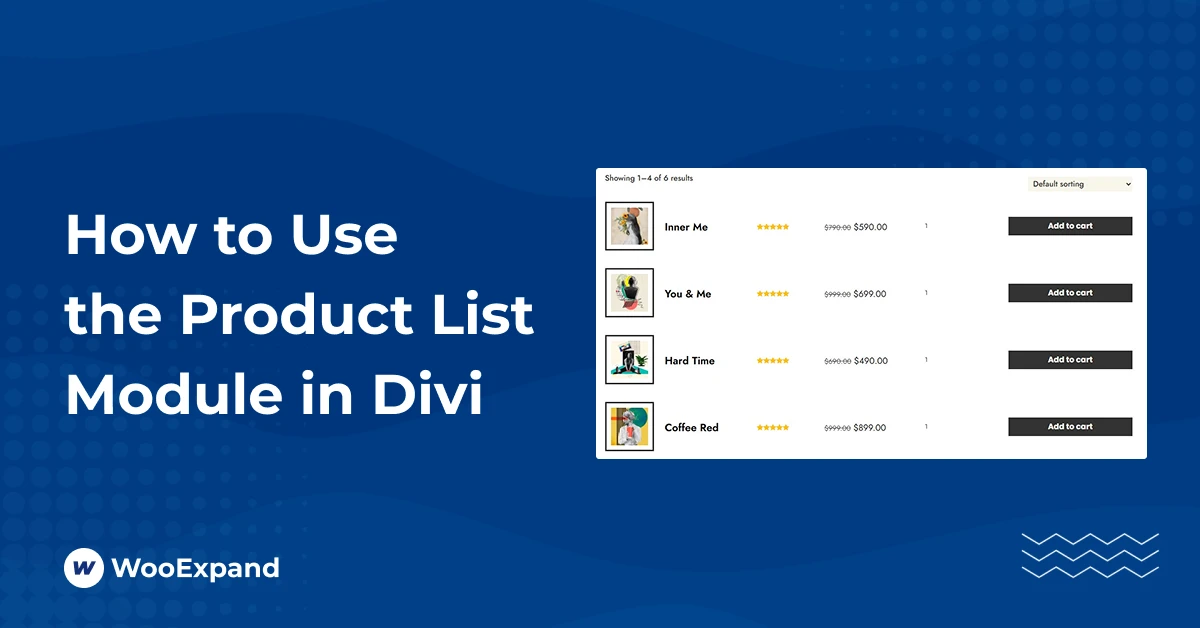

0 Comments